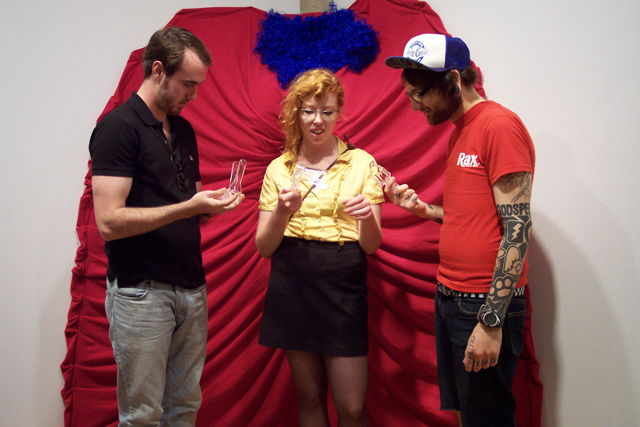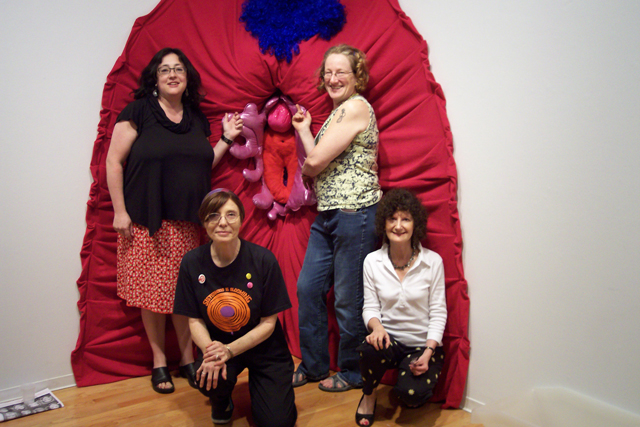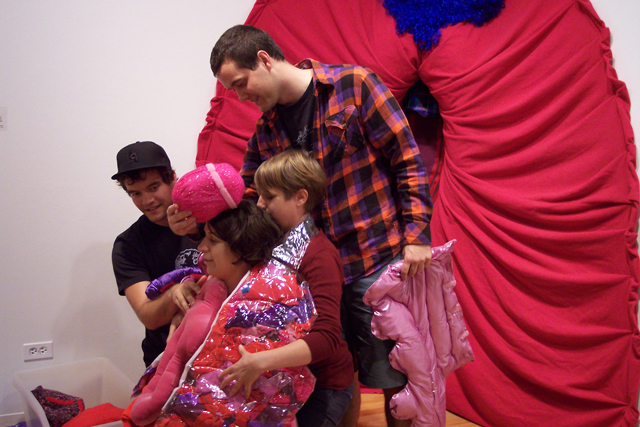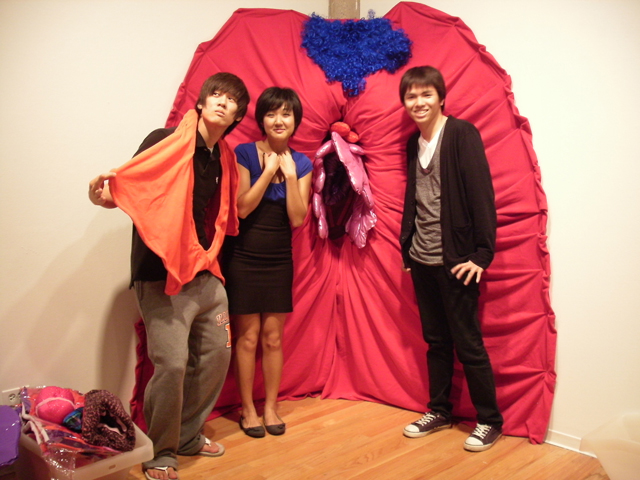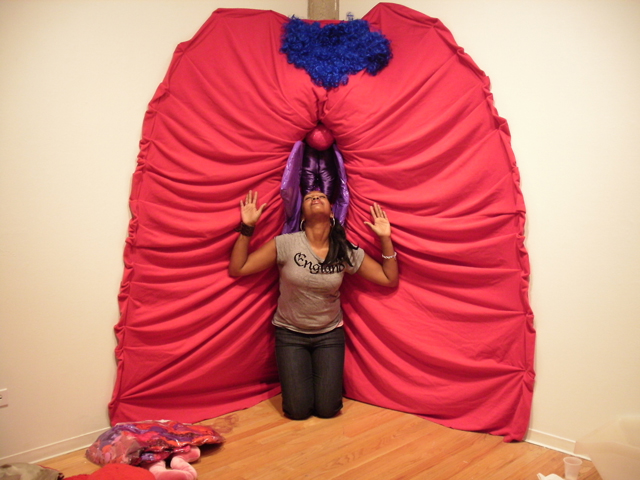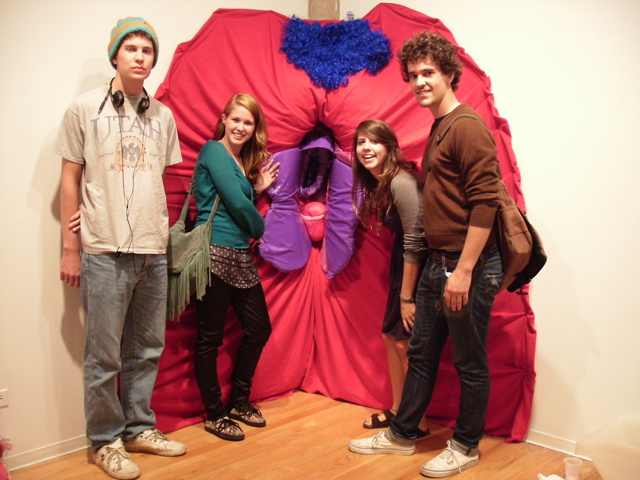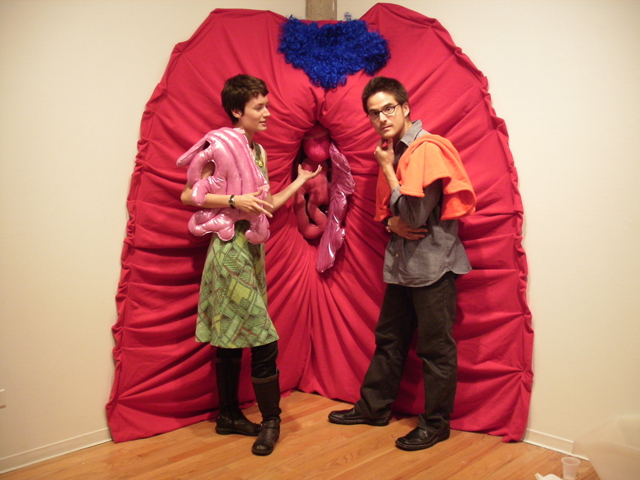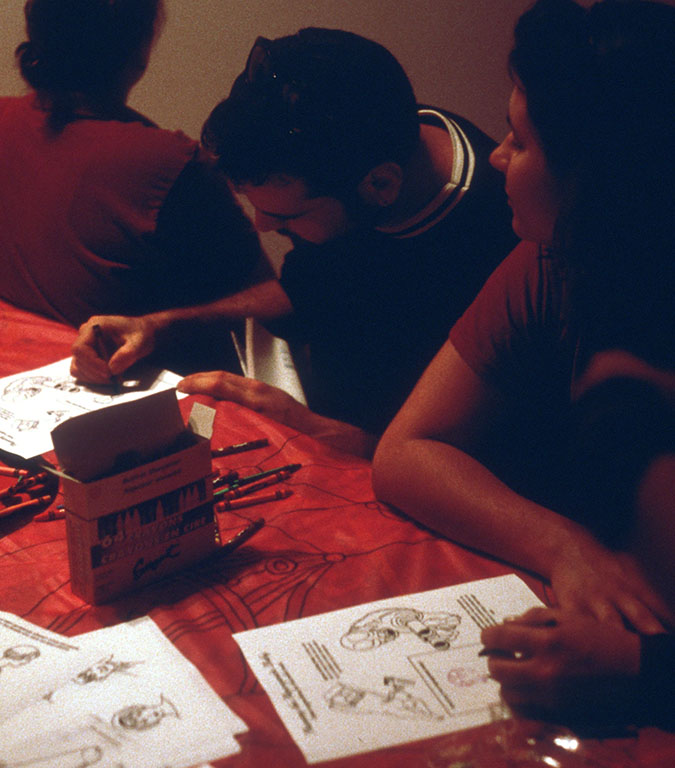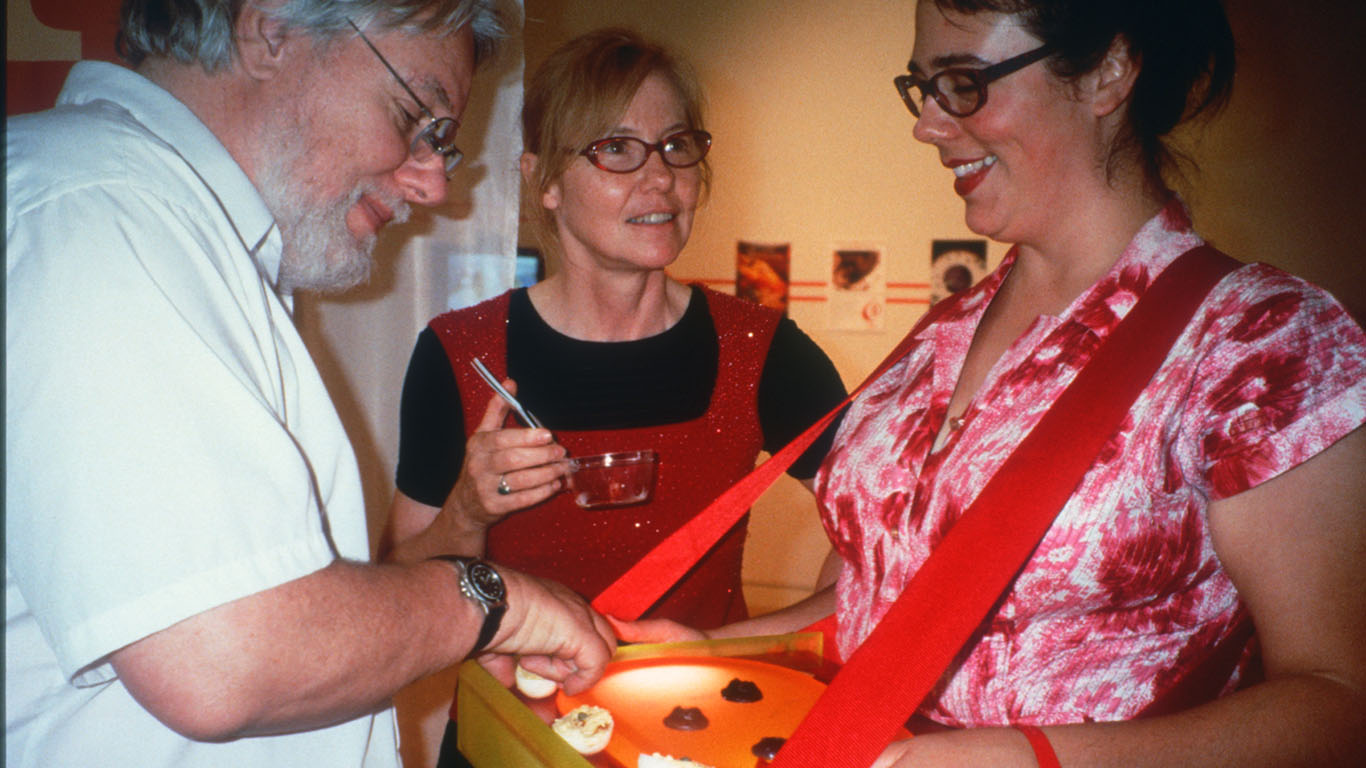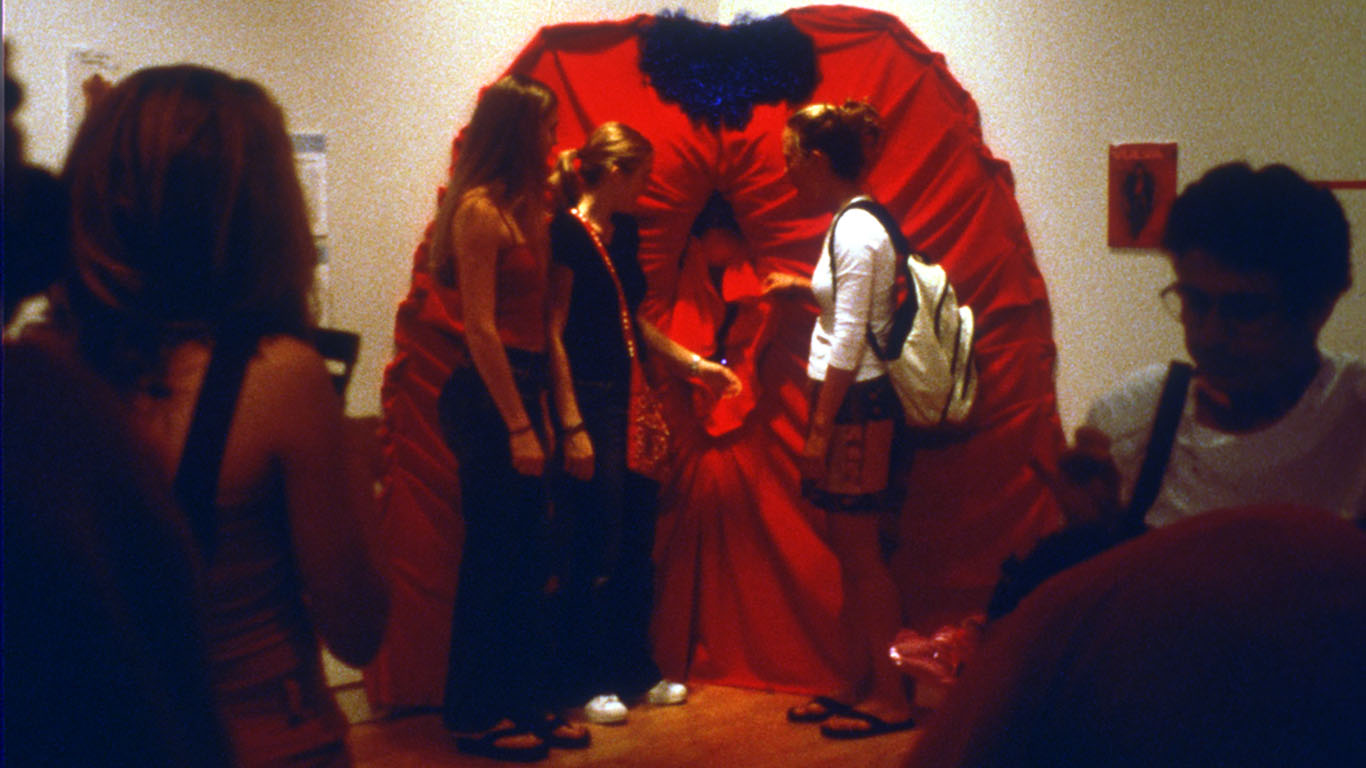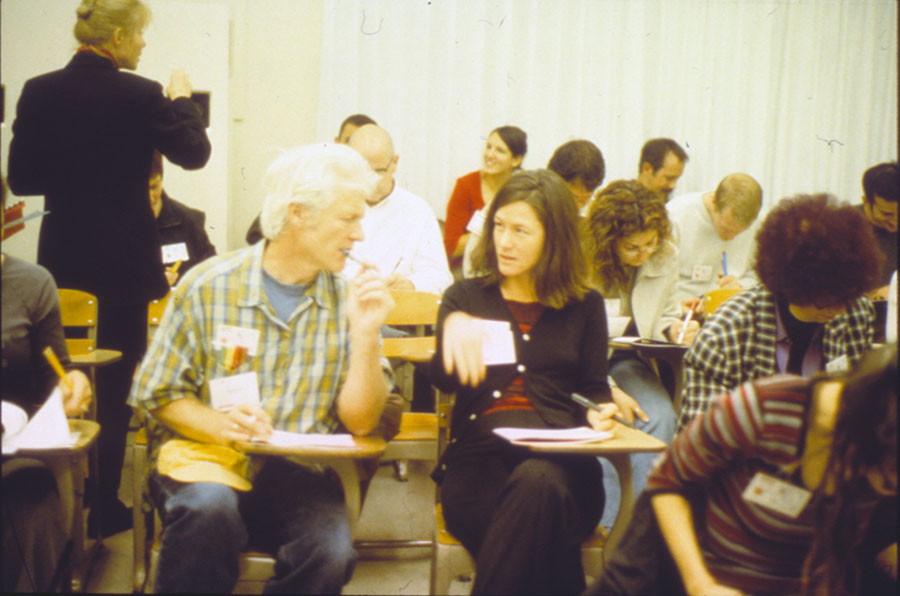
Styled as a sex education class, subRosa’s first public performance employed time honored, low tech teaching methods to inspire critical thinking and knowledge sharing about the new Assisted Reproductive Technologies. Just coming into wide use at the time, we looked at ARTs and their effects on female sexuality, reproductive choice, eugenics, and gender in the Biotech Century. subRosa members posed as corporate and government agency representatives, registering class participants and assigning them to one of 5 groups named for the protein bases of DNA (T, A, G, & C), or a fifth, “dud” group. Following an illustrated crash course on reproductive genetics and ART methods, participants were given a workbook with a “reproductive choice” form to complete. In a hilarious final “repro-tech mixer” participants mingled to find reproductive partner(s) matching their preferences to negotiate “making a perfect baby the biotech way.” A spontaneous break-away group of Luddites desiring to have babies the old-fashioned sexy way highlighted this performance.
- Performed as “Sex & Gender in the Biotech Century,” Digital Secrets conference, Arizona State University, Tempe, Arizona, November, 2000
- Performed as “The Sex and Gender Education Show,” Hardware, Software, Wetware & Women conference, St. Mary’s College of Maryland, December, 2002
The Sex and Gender Education Show has its own web site and workbook, and the first iteration is documented on subRosa’s Selected Works DVD.

